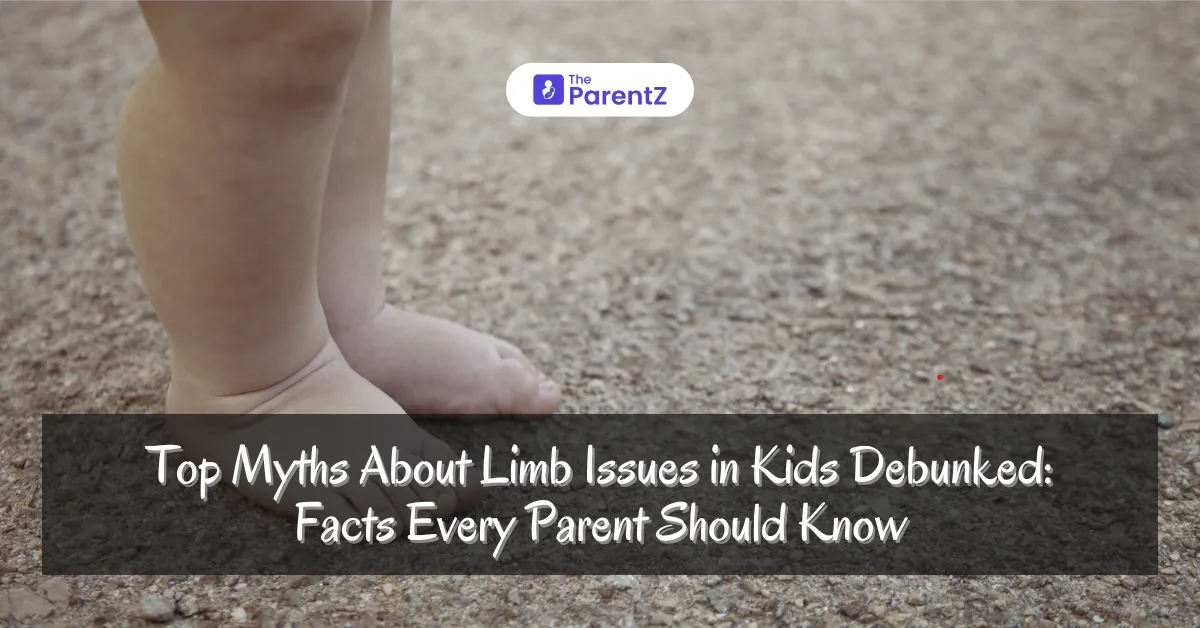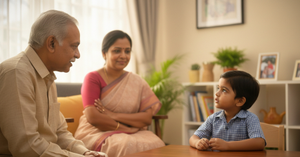Limb issues in children can be caused by genetic conditions, birth defects, injuries, or medical conditions. Despite advancements in medical science, many misconceptions persist, often leading to unnecessary fear or stigma. These myths can prevent parents from seeking timely intervention or fully supporting their child’s development.
Learn about the psychological impact of limb issues in children
Myth 1: Limb Differences Are Always Genetic
Fact: While genetics play a significant role in some limb abnormalities, not all cases are inherited.
Many limb issues arise from external factors such as:
• Amniotic Band Syndrome, where fibrous bands restrict fetal limb growth.
• Growth plate injuries that affect bone development.
• Infections like osteomyelitis that damage bones.
• Trauma or accidents leading to limb deformities.
Although genetic testing can identify some conditions, not all limb issues are hereditary.
Myth 2: Children With Limb Issues Can’t Lead a Normal Life
Fact: With the right support, children with limb differences can live fulfilling, active lives.
Many kids with limb conditions excel in school, sports, and social activities. Modern advancements in prosthetics, physical therapy, and assistive devices help improve mobility and independence. Encouragement from parents, teachers, and peers plays a crucial role in boosting confidence and self-esteem.
Myth 3: Surgery Is the Only Treatment Option
Fact: Treatment depends on the specific condition and may include therapy, prosthetics, or orthotics instead of surgery.
While some cases require surgical intervention, many children benefit from:
• Physical therapy to improve strength and coordination.
• Orthotics or braces to support limb function.
• Prosthetic limbs for mobility and daily activities.
Myth 4: Limb Differences Always Cause Pain and Disability
Fact: Many children with limb differences experience little to no pain and adapt well to their condition.
While some limb conditions can cause discomfort or mobility challenges, many children grow up leading active and pain-free lives. Proper medical care, adaptive tools, and physical therapy can help manage any difficulties effectively.
Myth 5: A Child With a Limb Issue Will Struggle Academically
Fact: Limb differences do not affect intelligence or learning abilities.
Some children may require classroom modifications, such as assistive writing tools or extra time for tasks, but their cognitive development remains unaffected. Encouraging independence and providing support when needed can help them thrive academically.
Myth 6: Prosthetics Are Only for Adults
Fact: Children can use prosthetics from an early age, and modern pediatric prosthetics are designed for growing bodies.
Prosthetic limbs for kids are lightweight, flexible, and adaptable. As children grow, their prosthetics can be modified or replaced to suit their needs. Early use of prosthetics helps in developing motor skills and confidence.
Myth 7: Parents Should Always Protect Their Child From Physical Activities
Fact: Encouraging movement and activity helps children build strength and independence.
Children with limb differences benefit from active lifestyles, including:
• Adaptive sports like swimming, cycling, or basketball.
• Physical therapy to enhance balance and coordination.
• Play-based exercises that promote mobility and social interaction.
Restricting activities out of fear may limit their potential and self-confidence.
Myth 8: A Child’s Limb Issue Is a Sign of Neglect During Pregnancy
Fact: Most congenital limb differences occur due to uncontrollable genetic or developmental factors.
While proper prenatal care is important for overall health, many limb conditions arise due to factors beyond a parent’s control, such as:
• Spontaneous genetic mutations.
• Amniotic band disruptions.
• Environmental influences during early pregnancy.
Blaming parents for congenital limb differences is both inaccurate and unfair.
Myth 9: There Is No Psychological Impact of Limb Differences
Fact: Children with limb differences may experience emotional and social challenges.
Many children with visible physical differences face self-esteem issues, social anxiety, or bullying. However, with the right support, they can develop confidence and resilience. Parents can help by:
• Encouraging open discussions about their child’s feelings.
• Connecting with support groups and role models with similar experiences.
• Advocating for inclusion in school and community activities.
Learn about the psychological impact of limb issues in children
Myth 10: There’s No Hope for New Treatments
Fact: Advancements in medical science, robotics, and regenerative medicine offer promising solutions.
Researchers are continuously developing new technologies, including:
• 3D-printed prosthetics tailored to individual needs.
• Bionic limbs with sensory feedback for better control.
• Stem cell therapy for bone regeneration and growth.
With ongoing innovations, the future for children with limb differences is brighter than ever.
Conclusion
Limb differences in children are often misunderstood due to widespread myths. Dispelling these misconceptions helps parents make informed decisions and ensures that children receive the best care and support.








Be the first one to comment on this story.